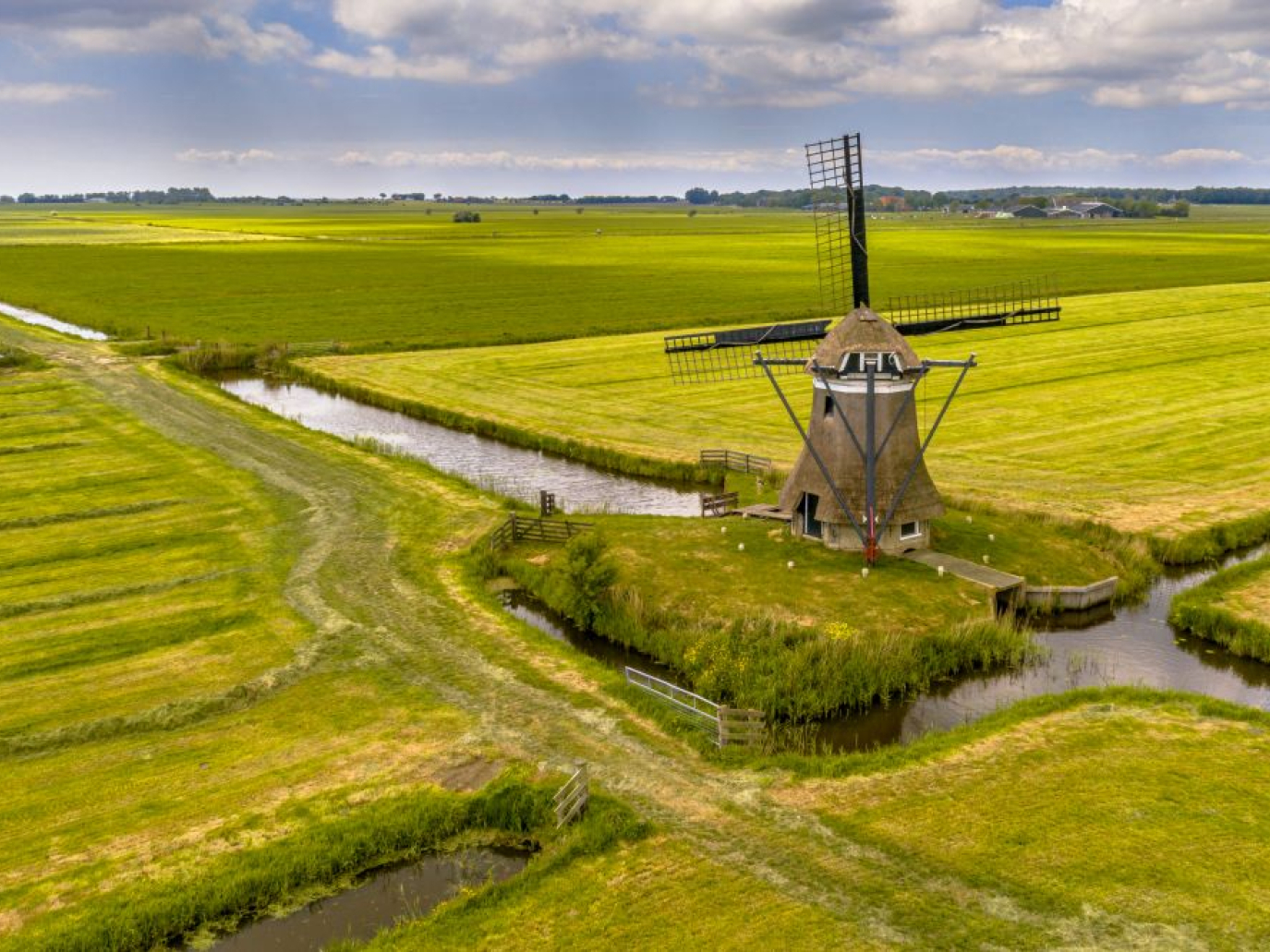This article is also available in Italian / Questo articolo è disponibile anche in italiano
Considered among the richest places in the world, delta territories are hubs of innovation, biodiversity, industrial and agricultural productivity, and home to some of the fastest-growing cities on the planet. An estimated 322 million people live in deltas, about 4% of the world's population. However, current urbanisation and climate change are putting pressure on the livability of the deltas themselves through challenges ranging from land subsidence to sand mining, biodiversity loss to groundwater depletion.
Working together with nature, a major source of inspiration when it comes to finding solutions to water and climate challenges, becomes necessary in societies and economies that aim to be resilient and future-proof. Among the world's leaders in biodiversity loss, the Netherlands has embraced Building with Nature as a basic approach to ensuring its water security and restoring ecosystems while simultaneously addressing important social and environmental challenges.
With about a third of its territory below sea level, the Netherlands is a unique place in the world to learn from NbS. The floods of 1993 and 1995, during which more than 200,000 people were evacuated and the risk of flooding became real, were the driving force for action and raising awareness about the importance of building with nature instead of fighting against it.
Knowledge first
Launched at the end of May 2024, NL2120 is a 10-year knowledge program and partnership between government agencies, civil society organisations, businesses, and research and education institutes that jointly seek practical, Nature-based Solutions to fighting climate change. The Dutch government has invested 110 million euros (of which 40 million euros is conditional) in NL2120 to absorb climate impacts and restore biodiversity, while maintaining national productivity capacity and strengthening prosperity.
“We have shaped the landscape to our advantage through coastal protection with steel and concrete, and we are lowering water levels to bring land into use, but technical solutions have their limitations,” explained NL2120 President Alex Hekman. “With NL2120, we focus on Nature-based Solutions that adapt to the natural characteristics of water and soil systems, better conserve biodiversity, and are more resilient to climate change.”
In parallel, the Knowledge Center for Policies and Regulations, wanted by the Dutch government, tells in a structured and factual way what Nature-based Solutions are, the characteristics, and current policies in the field at the national, European, and international levels. It focuses on success stories, current projects, and the possibilities offered by NbS regarding, for example, jobs and ecological, social, and economic impacts. The portal is also designed for civil servants and government officials who, in addition to basic knowledge, can draw inspiration on possible practical applications.
Sand and dunes to protect the coastline
One example of how much can be built with NbS to improve coastal protection is, undoubtedly, Sand Motor. Implemented along the Delfland coast in the province of South Holland, the so-called sand motor is an innovative pilot project, carried out by Rijkswaterstaat, an executive agency of the Ministry of Infrastructure and Water Management. It aims to test the increase in regular beach nourishment along the Dutch coast for the duration of 20 years. An example of Building with Nature, the project involved a huge amount of sand extracted offshore and deposited along the coast in one operation to form a hook-shaped peninsula. Using natural processes to redistribute sand over time and create space for recreational activities, Sand Motor is also a buffer against sea level rise to mitigate the impacts of storms and coastal flooding. It also provides a deeper understanding of coastal system behavior.
Increasing risks of inland and coastal flooding require constant upgrading of protective infrastructure. Dutch climate experts have, in fact, recently warned that the country could experience more severe sea level rise than previously assumed, surging by more than two metres by the end of the century.
The Hondsbossche dunes are an example of a nature-based coastal protection solution that meets new needs and also supports local economic development. Prior to their construction, the existing infrastructure no longer met safety standards. Rather than raise the present seawall, policymakers decided to build an artificial beach and dune landscape on the side of the existing seawall, which now stretches along seven kilometres of North Sea coastline between the villages of Petten and Camperduin. Completed in 2015, the dunes can be strengthened further by adding more sand, while, to date, they provide a valuable space for nature and recreation and support the tourism sector of local communities.
(Re)design of streams and rivers
Flooding is both an external and internal hazard, with the need for interventions that will slow down water runoff and increase infiltration capacity in inland courses through technologies and methodologies that combine water safety, water availability, and environmental restoration. Started in 2007, the main goal of the Room for the River program has been to handle rising water levels in rivers by lowering floodplain levels, moving levees, and increasing the depth of side channels. By restoring natural floodplains and creating additional space for four rivers (Rhine, Meuse, Waal, and IJssel), measures were taken in more than 30 locations with the involvement of nineteen partners including provinces, municipalities, regional water authorities, and the Rijkswaterstaat, the agency responsible for the entire program.
Another example in this direction is the restoration of the Leuvenum stream in the Veluwe region. Sand carryover has caused this stream to flood more often, irrigating the surrounding forest. This reduces desiccation and soil acidity and increases biodiversity. In the Grensmaas project, in contrast, gravel extraction is used to help develop the natural environment and protect against high water levels.
Rehumidification and adaptation to climate change in agriculture
Nature-based Solutions also play a central role in agriculture: using more natural levels of water reduces soil subsidence and CO₂ emissions, improves drought resilience, particularly on sandy soils, and counteracts salinization in coastal areas. The Action Program for Adaptation to Climate Change in Agriculture of the Dutch Ministry of Agriculture, Fisheries, Food Security and Nature concretely describes how the agricultural sector – in a joint effort of the whole sector, including water authorities – can be prepared for extreme weather conditions and other risks associated with climate change.
There are five pillars of the Action Program: water system to cope with droughts and floods; soil system to absorb, store, and supply water and nutrients to plants; crops and farming systems, such as choosing more resistant varieties to extreme weather conditions; livestock farms prepared to handle heat and drought through, for example, good ventilation and cooling in sheds or access to shade outdoors; and support at the local level in close collaboration between water, municipal and provincial authorities and farmers, and at the international level through the exchange of new and best practices.
Among the groundbreaking projects in this vein, the Peatland Innovation Program is experimenting with wet farming, both for crops and livestock, in the province of North Netherlands, which has high groundwater levels. Climate-Proof Friesland 2050, meanwhile, is a blueprint for how Friesland could base landscape design on natural water levels and manage sea-level rise, soil subsidence, flooding, and salinization. Given the crucial importance of soil today, the Netherlands is equally active in the protection and management of peatlands and wetlands. Several research projects, including European ones, have addressed and are addressing these ecosystems. Such as Landmarc, aimed at improving the understanding of how and where terrestrial mitigation technologies – such as agroforestry practices in the province of North Brabant – can be most effectively deployed; finally Rewet, a project aimed at restoring wetlands in order to minimise emissions and maximise carbon uptake, whose partners include Wageningen University and the University of Parma.
DOWLOAD AND READ THE NEW ISSUE OF RENEWABLE MATTER: NATURE-BASED SOLUTIONS
Image: Envato



